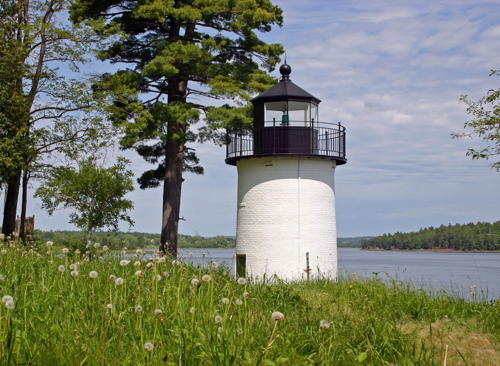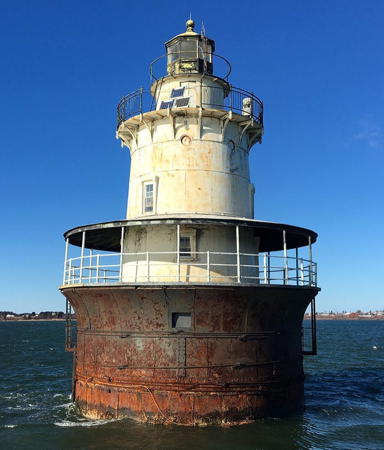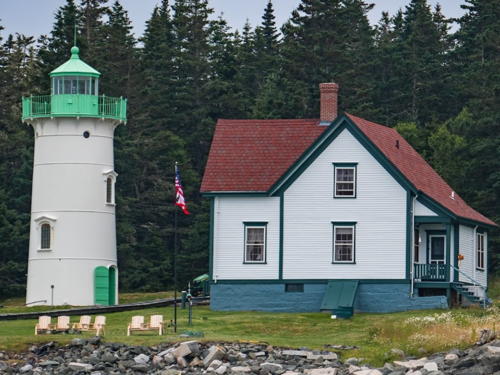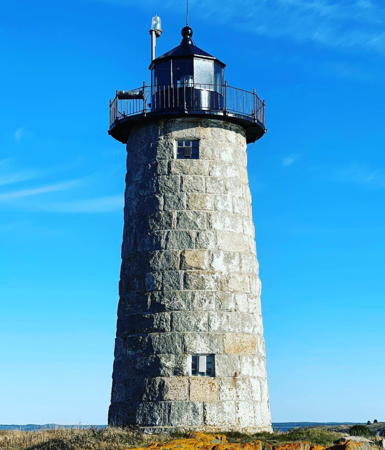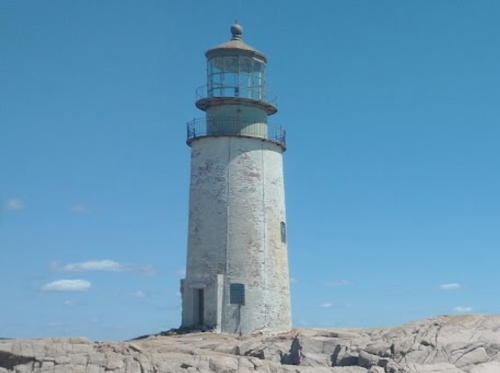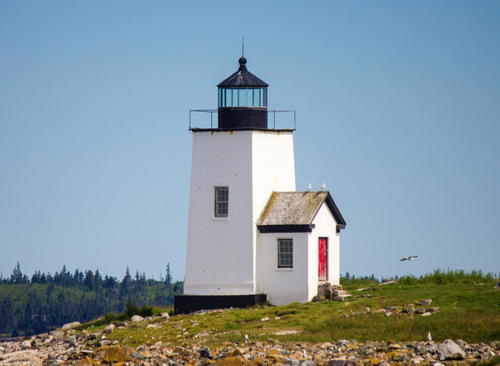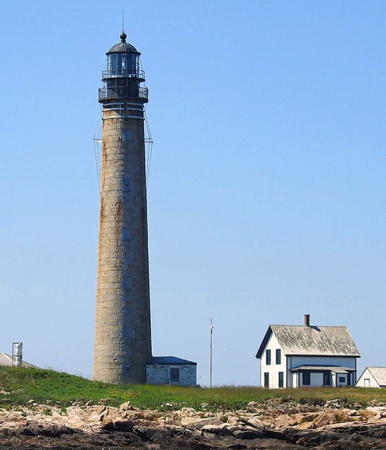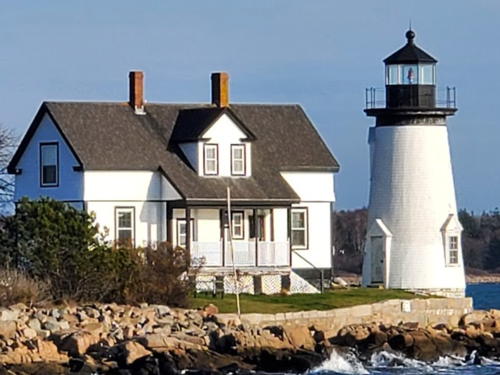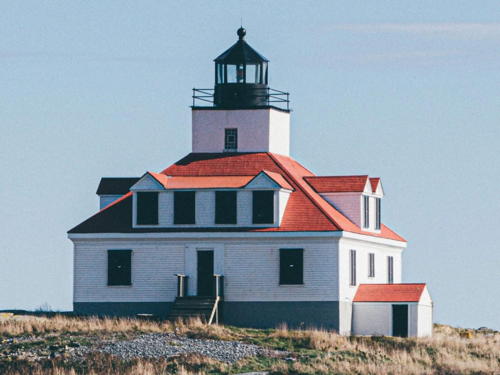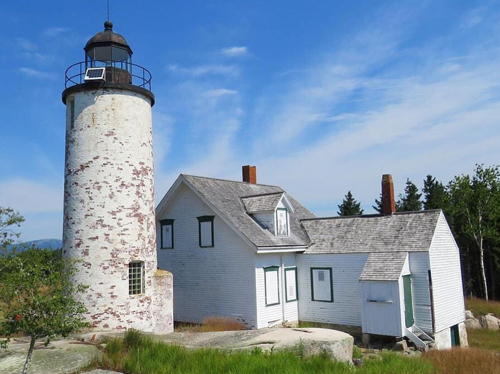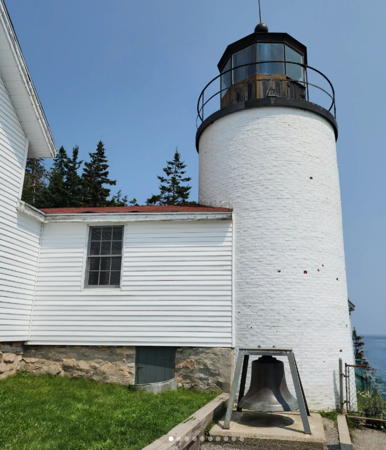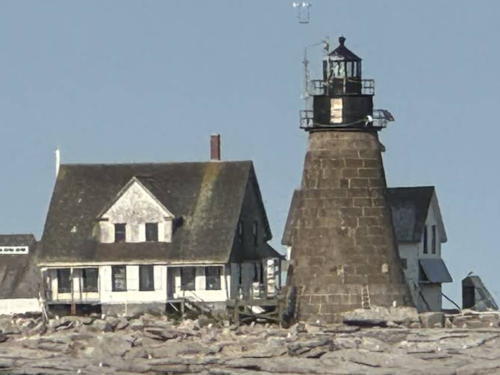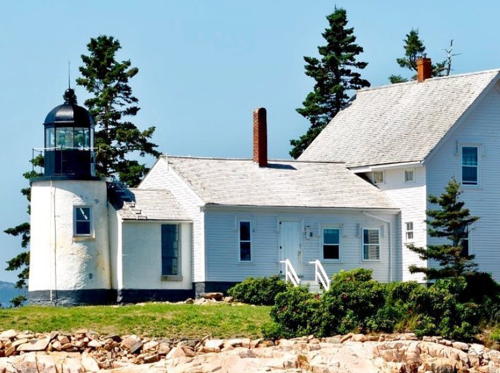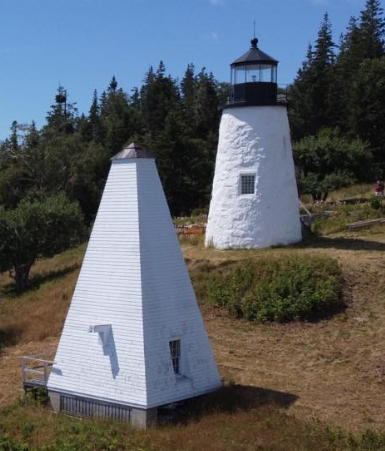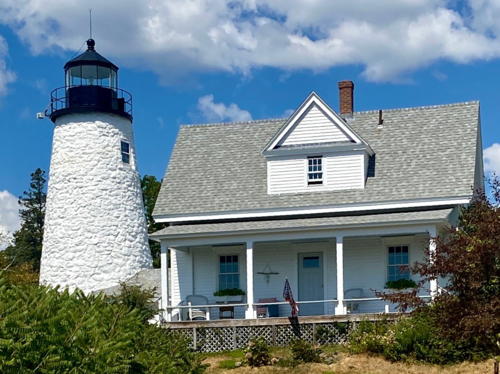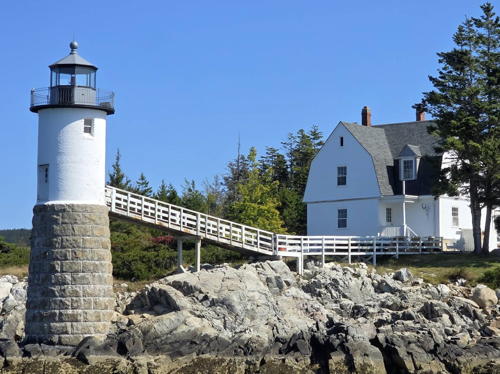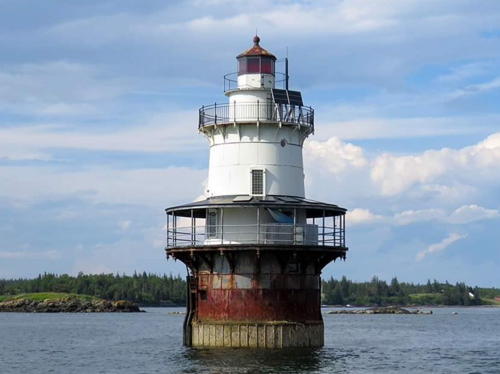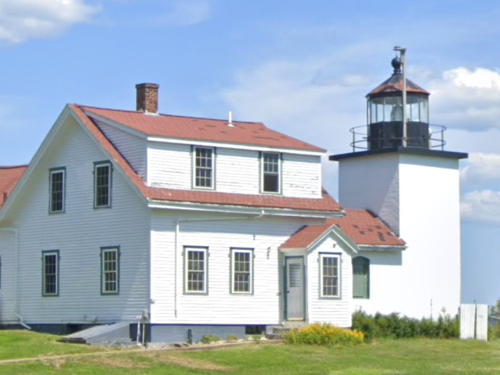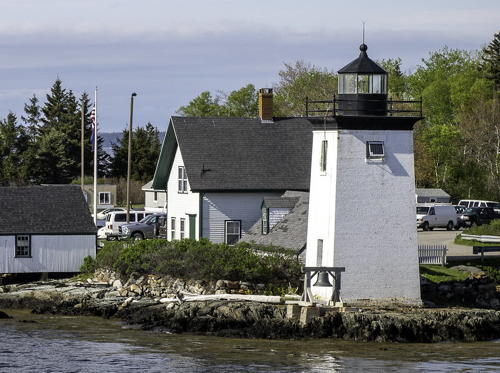The United States of America is a federal union of 50 states and a capital district. The state of Maine is located in the northeastern corner of the nation bordering the Canadian provinces of Québec and New Brunswick. Originally part of Massachusetts, Maine was admitted to the Union as the 23rd state in 1820.
Maine is divided into sixteen counties. This page includes lighthouses of the eastern coast of Maine from the Penobscot Bay islands east to the Canadian border, the area widely known in Maine as "Down East." It includes Washington, Hancock, and Waldo Counties and the eastern half of Knox County. The eastern coast of Maine is rugged and deeply indented, creating many small harbors and requiring many lighthouses.
Lighthouse preservation is very strong in Maine, as evidenced by the large number of local preservation societies and trusts. The Maine Lights program, passed by Congress in 1996, led to the transfer of 28 lighthouses from the Coast Guard to local preservation groups or other agencies and served as a model for the National Historic Lighthouse Preservation Act of 2000. Except for eight privately-owned towers all but a handful of Maine's lighthouses now have local support groups. In addition a powerful national force for lighthouse preservation, the American Lighthouse Foundation, is based in Maine.
Aids to navigation in Maine are maintained by the U.S. Coast Guard Sector Northern New England and its Aids to Navigation Team based at Southwest Harbor, but ownership (and sometimes operation) of historic lighthouses has been transferred to local authorities and preservation organizations in most cases.
ARLHS numbers are from the ARLHS World List of Lights. Admiralty numbers are from volumes H and J of the Admiralty List of Lights & Fog Signals. USCG numbers are from Vol. I of the USCG Light List. For lights close to the Canadian border, CCG numbers are from the Atlantic Coast volume of the Canadian Coast Guard's List of Lights, Buoys and Fog Signals.
- General Sources
- New England Lighthouses: A Virtual Guide - Maine
- Jeremy D'Entremont's web site has extensive data, historical accounts, and photos for all of the lighthouses. D'Entremont also has more than 1000 photos on Flickr.com, and he has written several excellent books about Maine lighthouses.
- Maine Lighthouses
- Photos and historical accounts of Maine lighthouses from Kraig Anderson's LighthouseFriends.com site.
- Online List of Lights - Maine
- Photos by various photographers posted by Alexander Trabas. Many of the photos from this area are by Michael Boucher. Several U.S. lights near the Canadian border are included in the site's New Brunswick Bordering United States page.
- Lighthouses in Maine
- Photos by various photographers available from Wikimedia.
- Lighthouses of Maine
- From Lighthouse Getaway (Bill Britten, University of Tennessee): photos and brief accounts of many of the lighthouses.
- Maine, United States Lighthouses
- Aerial photos posted by Marinas.com.
- World of Lighthouses - Northeast Coast of U.S.
- Photos by various photographers available from Lightphotos.net.
- Leuchttürme der USA auf historischen Postkarten
- Historic postcard images of U.S. lighthouses posted by Klaus Huelse.
- U.S. Coast Guard Navigation Center: Light Lists
- The USCG Light List can be downloaded in pdf format.
- GPSNautical Charts
- Online navigation chart for eastern Maine.
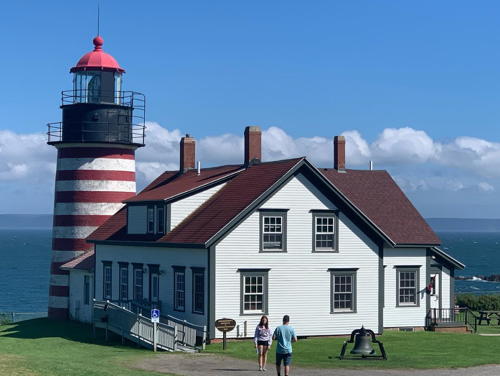
West Quoddy Head Light, Lubec, August 2023
Instagram photo by John Hall
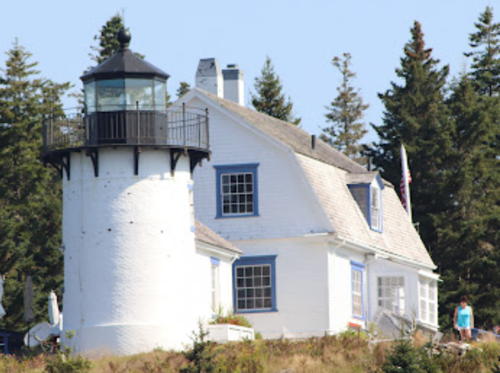
Bear Island Light, Northeast Harbor, September 2023
ex-Google Maps photo by Alex Paterau
